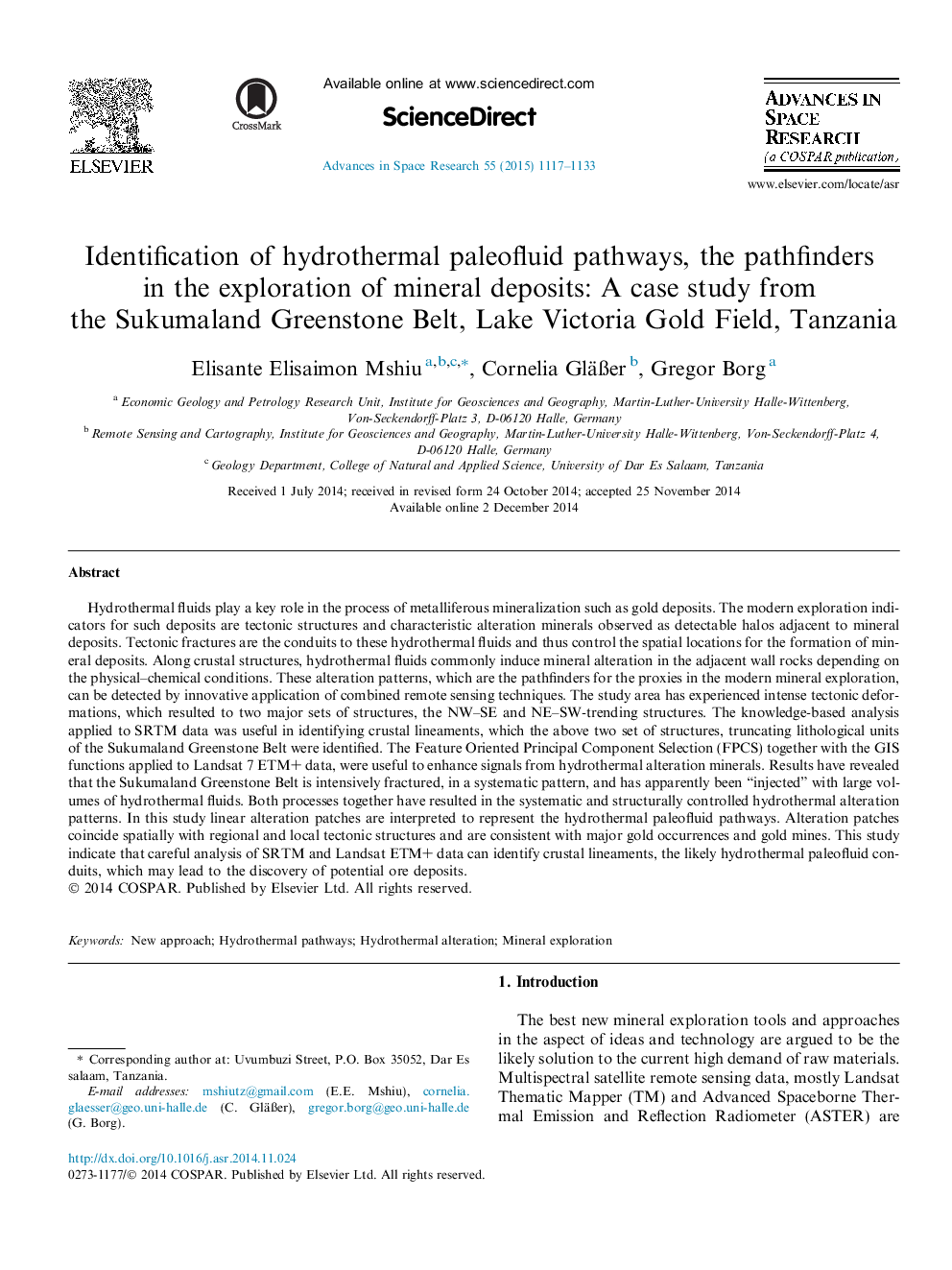| کد مقاله | کد نشریه | سال انتشار | مقاله انگلیسی | نسخه تمام متن |
|---|---|---|---|---|
| 10694238 | 1020018 | 2015 | 17 صفحه PDF | دانلود رایگان |
عنوان انگلیسی مقاله ISI
Identification of hydrothermal paleofluid pathways, the pathfinders in the exploration of mineral deposits: A case study from the Sukumaland Greenstone Belt, Lake Victoria Gold Field, Tanzania
ترجمه فارسی عنوان
شناسایی مسیرهای پالفلوئید هیدروترمال، مسیریاب ها در اکتشاف ذخایر معدنی: مطالعه موردی از کمربند سبز استون سوقومالد، میدان دریاچه ویکتوریا طلا، تانزانیا
دانلود مقاله + سفارش ترجمه
دانلود مقاله ISI انگلیسی
رایگان برای ایرانیان
کلمات کلیدی
موضوعات مرتبط
مهندسی و علوم پایه
علوم زمین و سیارات
علوم فضا و نجوم
چکیده انگلیسی
Hydrothermal fluids play a key role in the process of metalliferous mineralization such as gold deposits. The modern exploration indicators for such deposits are tectonic structures and characteristic alteration minerals observed as detectable halos adjacent to mineral deposits. Tectonic fractures are the conduits to these hydrothermal fluids and thus control the spatial locations for the formation of mineral deposits. Along crustal structures, hydrothermal fluids commonly induce mineral alteration in the adjacent wall rocks depending on the physical-chemical conditions. These alteration patterns, which are the pathfinders for the proxies in the modern mineral exploration, can be detected by innovative application of combined remote sensing techniques. The study area has experienced intense tectonic deformations, which resulted to two major sets of structures, the NW-SE and NE-SW-trending structures. The knowledge-based analysis applied to SRTM data was useful in identifying crustal lineaments, which the above two set of structures, truncating lithological units of the Sukumaland Greenstone Belt were identified. The Feature Oriented Principal Component Selection (FPCS) together with the GIS functions applied to Landsat 7Â ETM+ data, were useful to enhance signals from hydrothermal alteration minerals. Results have revealed that the Sukumaland Greenstone Belt is intensively fractured, in a systematic pattern, and has apparently been “injected” with large volumes of hydrothermal fluids. Both processes together have resulted in the systematic and structurally controlled hydrothermal alteration patterns. In this study linear alteration patches are interpreted to represent the hydrothermal paleofluid pathways. Alteration patches coincide spatially with regional and local tectonic structures and are consistent with major gold occurrences and gold mines. This study indicate that careful analysis of SRTM and Landsat ETM+ data can identify crustal lineaments, the likely hydrothermal paleofluid conduits, which may lead to the discovery of potential ore deposits.
ناشر
Database: Elsevier - ScienceDirect (ساینس دایرکت)
Journal: Advances in Space Research - Volume 55, Issue 4, 15 February 2015, Pages 1117-1133
Journal: Advances in Space Research - Volume 55, Issue 4, 15 February 2015, Pages 1117-1133
نویسندگان
Elisante Elisaimon Mshiu, Cornelia GläÃer, Gregor Borg,
